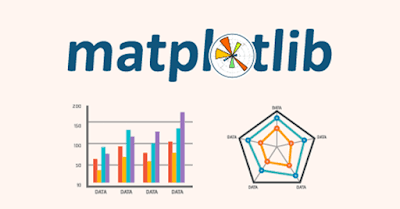Introduction
In the realm of data science and analytics, Matplotlib stands out as a powerful and essential Python library for data visualization. Developed by John D. Hunter in 2003, Matplotlib provides a comprehensive suite of tools for creating static, animated, and interactive plots in Python. It serves as the foundation for many other visualization libraries, such as Seaborn and Pandas' plotting capabilities. Matplotlib is widely used in scientific research, education, and data analysis to create publication-quality graphs and plots.
📌 Why Use Matplotlib?
Matplotlib offers numerous advantages that make data visualization more intuitive and efficient:
Versatility: Supports a wide range of plot types, including line plots, bar charts, histograms, scatter plots, pie charts, and 3D plots.
Customization: Provides extensive options to customize plots, such as colors, labels, gridlines, and styles.
Integration: Works seamlessly with NumPy, Pandas, and Jupyter Notebooks.
Interactive Plots: Enables the creation of interactive plots that can be embedded in GUI applications.
Publication-Quality Graphics: Generates high-quality plots suitable for academic and professional publications.
🛠️ Installing Matplotlib
You can install Matplotlib using pip:
pip install matplotlib
Or using Anaconda:
conda install matplotlib
🧠 Core Components of Matplotlib
1. Pyplot
The pyplot module provides a MATLAB-like interface for creating plots with minimal code.
import matplotlib.pyplot as plt
x = [1, 2, 3, 4]
y = [10, 20, 25, 30]
plt.plot(x, y)
plt.xlabel('X-axis')
plt.ylabel('Y-axis')
plt.title('Simple Line Plot')
plt.show()
2. Figure and Axes
Matplotlib's object-oriented API allows for more control and customization.
import matplotlib.pyplot as plt
fig, ax = plt.subplots()
ax.plot(x, y)
ax.set_xlabel('X-axis')
ax.set_ylabel('Y-axis')
ax.set_title('Object-Oriented Plot')
plt.show()
📈 Common Plot Types
Line Plot
plt.plot(x, y)
plt.title('Line Plot')
plt.show()
Bar Chart
categories = ['A', 'B', 'C']
values = [10, 20, 15]
plt.bar(categories, values)
plt.title('Bar Chart')
plt.show()
Histogram
import numpy as np
data = np.random.randn(1000)
plt.hist(data, bins=30)
plt.title('Histogram')
plt.show()
Scatter Plot
x = np.random.rand(50)
y = np.random.rand(50)
plt.scatter(x, y)
plt.title('Scatter Plot')
plt.show()
Pie Chart
labels = ['A', 'B', 'C', 'D']
sizes = [15, 30, 45, 10]
plt.pie(sizes, labels=labels, autopct='%1.1f%%')
plt.title('Pie Chart')
plt.show()
🎨 Customizing Plots
Matplotlib allows extensive customization to enhance the visual appeal of plots.
plt.plot(x, y, color='green', linestyle='--', marker='o')
plt.title('Customized Line Plot')
plt.xlabel('X-axis')
plt.ylabel('Y-axis')
plt.grid(True)
plt.show()
📊 Subplots
Create multiple plots in a single figure using subplots.
fig, axs = plt.subplots(2, 2)
axs[0, 0].plot(x, y)
axs[0, 0].set_title('Plot 1')
axs[0, 1].bar(categories, values)
axs[0, 1].set_title('Plot 2')
axs[1, 0].hist(data, bins=20)
axs[1, 0].set_title('Plot 3')
axs[1, 1].scatter(x, y)
axs[1, 1].set_title('Plot 4')
plt.tight_layout()
plt.show()
🧹 Saving Plots
Save plots to various file formats.
plt.plot(x, y)
plt.title('Saved Plot')
plt.savefig('plot.png') # Save as PNG file
plt.savefig('plot.pdf') # Save as PDF file
plt.show()
📚 Learning Resources
Matplotlib Official Documentation
GeeksforGeeks Matplotlib Guide
🔚 Conclusion
Matplotlib is a versatile and powerful library that simplifies data visualization in Python. Its intuitive syntax and rich functionality make it a go-to tool
for data scientists and analysts. Whether you're creating simple plots or complex visualizations, Matplotlib provides the tools you need to present data effectively.



No comments:
Post a Comment